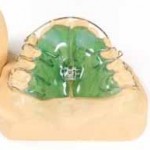
Rapid maxillary expansion (RME) is an orthopaedic procedure that has been used in orthodontics to open the midpalatal suture in order to provide a correct and stable maxillary width. The aim of the review was to evaluate the effects of RME on the nasal airways.
The Ovid, Scirus, Scopus, Virtual Health Library, and Cochrane Library databases were searched. Clinical trials that assessed airway changes at least 6 months after RME in growing children with rhinomanometry, acoustic rhinometry, computed tomography, or posteroanterior and lateral radiographs were selected. Studies that used surgically assisted RME and evaluated other simultaneous treatments during expansion, systemically compromised subjects, or cleft patients were excluded. Studies were scored for quality.
Twelve trials were finally considered eligible, four were of low quality methodology and excluded, the remaining eight were of moderate quality. They found that:-
- posteroanterior radiographs showed that nasal cavity width increases;
- in the lateral radiographs, decreased craniocervical angulation was associated with increases of posterior nasal space.
- cone-beam computed tomography did not show significant increases of nasal cavity volume.
- rhinomanometry showed reduction of nasal airway resistance and increase of total nasal flow, and
- acoustic rhinometry detected increases of minimal cross-sectional area and nasal cavity volume.
They concluded:-
There is moderate evidence that changes after RME in growing children improve the conditions for nasal breathing and the results can be expected to be stable for at least 11 months after therapy. Further randomized and blinded controlled studies are needed to strengthen the evidence of the long-term RME effects on airway dimensions and functions.
Baratieri C, Alves M Jr, de Souza MM, de Souza Araújo MT, Maia LC. Does rapid maxillary expansion have long-term effects on airway dimensions and breathing? Am J Orthod Dentofacial Orthop. 2011 Aug;140(2):146-56. PubMed PMID: 21803251.
